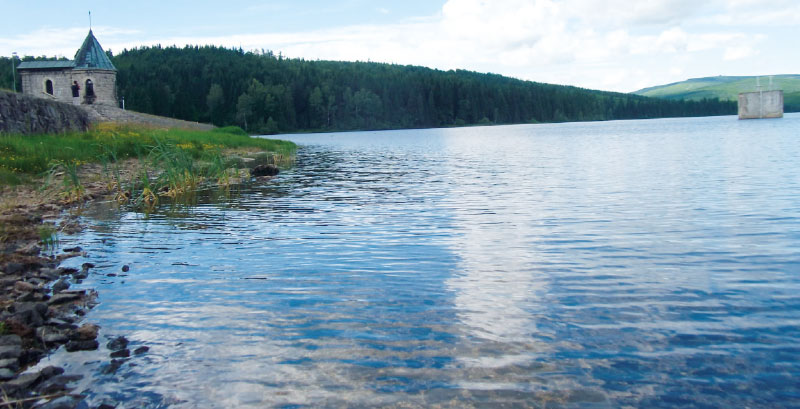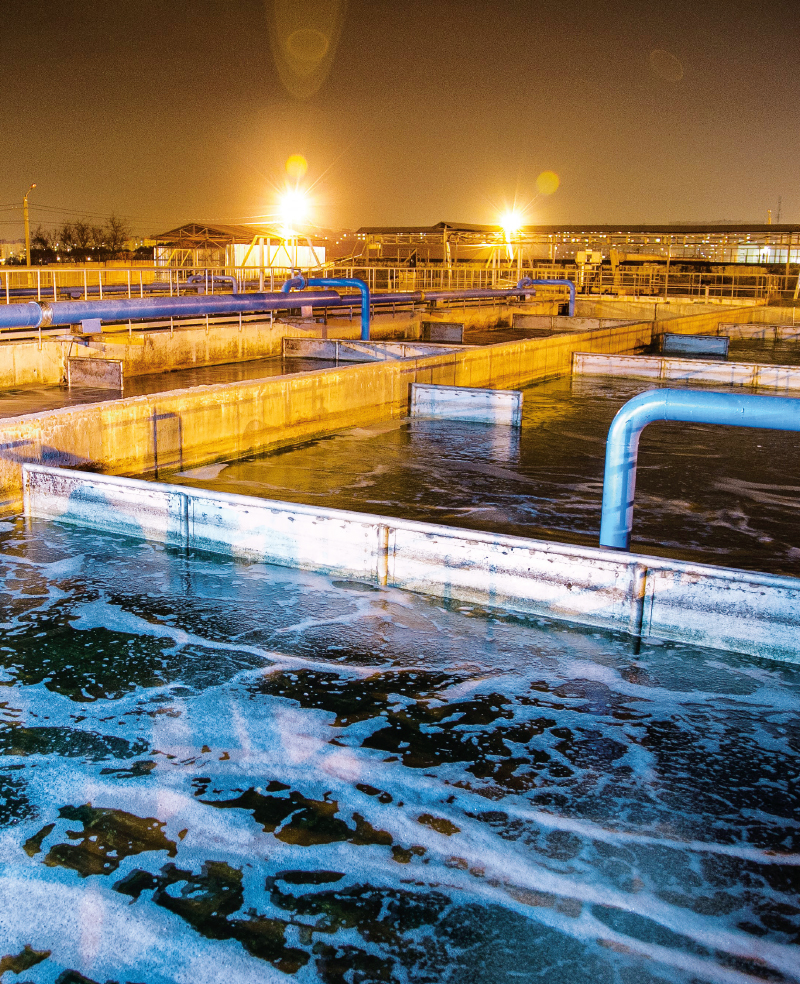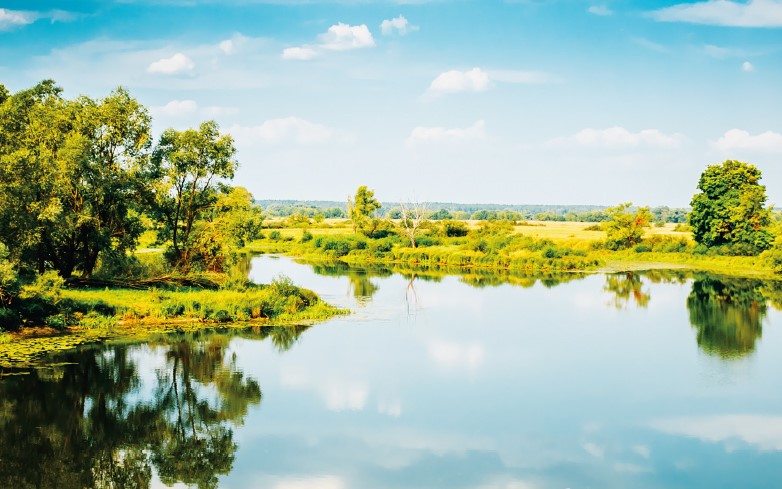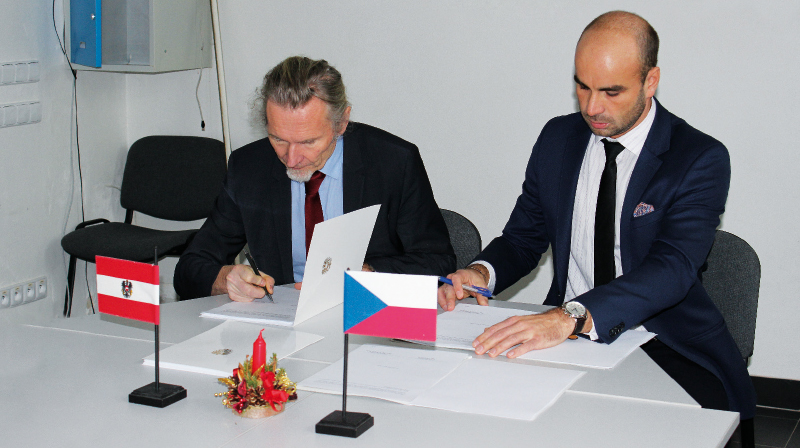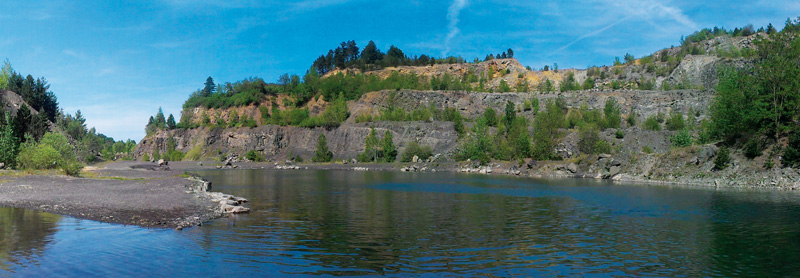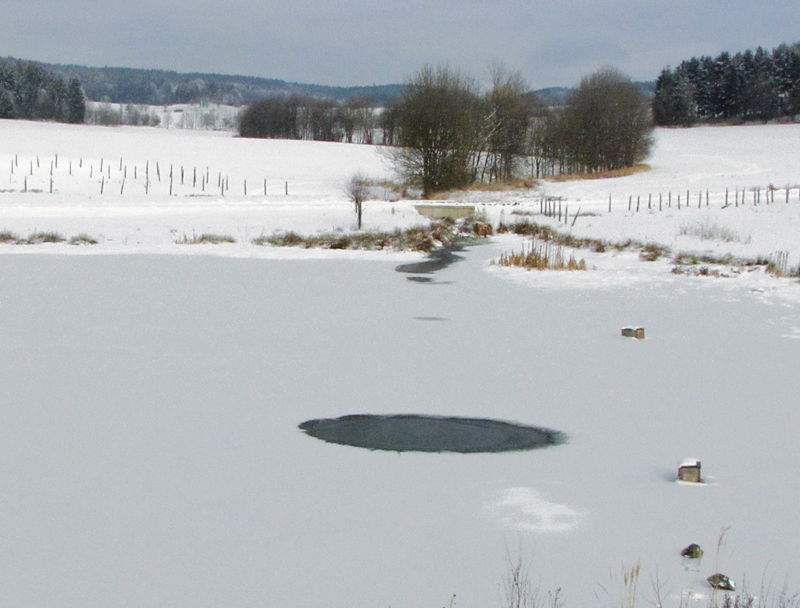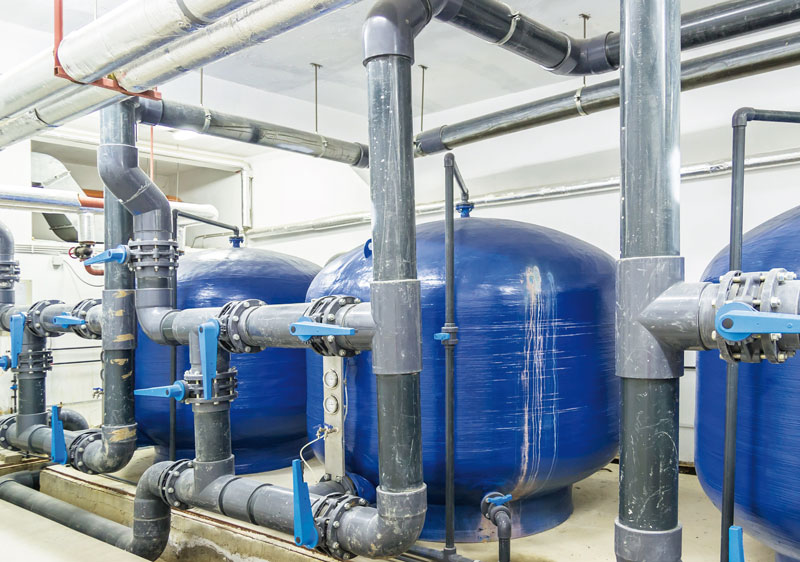Grey water footprint of malting barley production
Agriculture is the world’s main freshwater consumer; it also contributes to its contamination through fertilizers and pesticides. This article focuses on the grey water footprint (GWF) as an environmental indicator assessing the impact of agricultural production on water resources. The study analyses the GWF of malting barley production on an area of 9,674 ha in different regions of the Czech Republic. Special empha-sis is placed on including pesticides in the GWF calculation, as their impact on freshwater ecosystems and human health may exceed the impact of fertilizers. The analysis shows that insecticides have the highest GWF, especially deltamethrin, whose GWF is an order of magnitude higher than that of other agrochemicals. The study highlights the importance of including pesticides in future GWF assess-ments to better assess the environmental impacts of agricultural production and optimize sustainable water resource management strategies. At the same time, the study discusses different approaches to including biologically active substances in grey water footprint models.
Geographic data citations: case study of DIBAVOD – systematic review
Society, mainly through state and public institutions, spends considerable funds on the acquisition, management and sharing of data acquired with public funds, including scientific data. Evaluating the success of an open data policy is very problematic. One possibility is to use the citations of these datasets to track the use of open data. Dataset citation is a relatively new field and still faces a number of methodological and technical challenges, including little awareness in the scientific community of the positives of dataset citation. Also problematic is the low level of skill in citing datasets, which generally leads to different forms and ways of citations. In this study, an analysis was performed of the citations of the geographic database DIBAVOD, which is managed by T. G. Masaryk Water Research Institute. In total, 122 citing documents were included in the study. The study showed that the forms and methods of citation vary widely and do not show any discernible trends over time. Only the number of citations shows a slightly increasing trend. Almost a quarter of the papers then only mentioned the use of DIBAVOD without indicating the source of this data or citing it in another form.
Comparison of the Grey Water Footprint of Conventional Pollution and Micropollutants: A Case Study of the Bandung WWTP (Indonesia)
Grey water footprint refers to the amount of water required to dilute pollutants released into the aquatic environment so that the water quality remains above agreed water quality standards. This study examines the grey water footprint of micropollutants, also referred to as contaminants of emerging concern (CECs), compared to commonly monitored water parameters (such as nutrients and organic pollution) in wastewater. 24-hour samples were analysed from Indonesia’s largest WWTP, which uses a stabilization pond system for wastewater treatment. The grey water footprint was calculated for 12 micropollutants and six parameters of standard chemical monitoring. The highest value of the grey water footprint in the WWTP effluent was for BOD5 (13.5 l/l). The highest value among the micropollutants in the WWTP effluent was for Fluoxetine (0.08 l/l). When using other published PNEC values, Fluoxetine reached higher grey water footprint values than BOD5. The highest value of the grey water footprint in the WWTP influent was for Ibuprofen (210.4 l/l), but this substance was effectively removed in the WWTP.
Comparison of VTEI citations in the Web of Science and Scopus databases
A journal’s citation rate is an indicator of its quality. The presented study builds on analyses of the citation rate of the VTEI journal published in previous years. A new analysis of VTEI journal citations using Web of Science data was conducted and the citation analysis using Scopus data was updated. A comparison of citations in both bibliometric databases was performed to determine the degree of overlap between the two databases and whether it is more appropriate to monitor the citation rate in one or both bibliometric databases. The citation analysis confirmed a high degree of overlap between the two databases. For monitoring the citation rate of the VTEI journal, it is sufficient to track citations in the Scopus database; unique citations found in the Web of Science database represent only a small portion of all citations. The citation analysis also confirmed the increasing trend in the number of citations of articles published in the VTEI journal, which was noted in previous years.
Emerging contaminants in wastewater – results of Joint Danube Survey 4 evaluated via the grey water footprint
The Joint Danube Survey (JDS4), organized in 2019, provided a unique dataset on the occurrence of several hundred newly identified contaminants of emerging concern (CEC) in waters of the Danube river basin, including wastewater from selected wastewater treatment plants. In this study, published JDS4 data were used to assess the significance of individual substances identified in wastewater using the grey water footprint approach. Determining all newly identified contaminants is time-consuming and expensive, so it is reasonable to focus on the „most problematic“ substances. The advantage of the grey water footprint assessment is conversion of the amount of discharged pollutants into the volume of water needed for dilution to an environmentally ‘safe level’, allowing comparison of different substances. Based on JDS4 data, out of several hundreds of substances detected, 33 were identified as potentially risky, according to set criteria. However, this list cannot be taken as definitive, as the level of knowledge about the harmfulness of individual substances quickly develops with regard to the risk currently attributed to them. Similarly, the JDS4 dataset reflects a specific data collection methodology, which may not capture all connections related to the impact of the occurrence of new substances on the environment.
(Inter)nationality of VTEI journal
V článku je popsána analýza národní orientace časopisu Vodohospodářské technicko-ekonomické informace (VTEI) pomocí bibliometrického indikátoru Index Národní Orientace (INO). Tato analýza navazuje na citační analýzu provedenou v roce 2022. Na základě údajů o publikovaných článcích se vypočítává Index Národní Orientace Publikujících autorů (INO-P). Pro citace časopisu VTEI v databázi Scopus se vypočítává Index Ná-rodní Orientace Citujících autorů (INO-C).
The history of the grey water footprint, or let’s quote the originator of the idea
The water footprint was introduced in 2002 [1] and quickly became a popular tool for assessing anthropogenic impacts associated with human activities. The basic methodological document that describes the water footprint methodology is the Water Footprint Assessment Manual from 2011 [2]. The water footprint consists of three components, depending on the source and type of water use: 1) the blue water footprint represents water consumption from water sources, i.e. taken from rivers, lakes, and aquifers, 2) the green water footprint represents the consumption of water that comes from precipitation and is stored on the surface of the soil or plants or as soil moisture, and is consumed mainly by evapotranspiration, 3) the grey water footprint represents the amount of water needed to assimilate anthropogenic pollution based on the natural background concentration and existing environmental water quality standards.
Citation analysis of VTEI
The citation rate of a journal is considered an indicator of its quality. This study presents a citation analysis of the VTEI journal, published by the T. G. Masaryk Water Research Institute (hereinafter TGM WRI). The citation analysis was conducted to identify the countries and institutions of authors who cite articles published in VTEI and the subject areas in which articles published in VTEI are cited. The identification of citing articles was complicated by the wide range of forms of VTEI journal title notation, as well as errors in the Scopus database. Therefore, the search was performed in several steps and the search query was gradually expanded. Descriptive statistics methods and cluster analysis using VOSviewer software were used for the analyses. A total of 126 publications were searched in the Scopus database, but only 108 publications were included in the analysis. These 108 articles quoted 152 articles published in VTEI. The number of VTEI citations has increased from sporadic citations prior to 2009 to more than 20 citing publications in 2020 and more than 30 cited publications in 2021. The majority of citations were received by articles published in VTEI within the first six years of publication, and the citation rate for articles published between 2009 and 2021 is relatively even. Authors from 66 institutions in 16 countries, mainly in Europe, contributed to the citing publications. However, authors from the Czech Republic were dominantly involved in citations and, in many cases, these were authors of articles published in VTEI. The main areas where articles published in VTEI are cited are environmental sciences, specifically the impacts of climate change on water management and hydrology, and water quality assessment using the water footprint.
Development of citations of the magazine VTEI
This article is available in Czech only. For translation or more information on this topic, please contact author. Časopis Vodohospodářské technicko-ekonomické informace (VTEI) vychází již 63 let. Zároveň je to pět let od ukončení spolupráce s časopisem Vodní hospodářství a začátku vydávání časopisu VTEI v současné modernizované podobě. V úvodním slovu k číslu 4–5/2015, jež… Read more »
Support for open data, data sharing and data articles
Výzkumný ústav vodohospodářský T. G. Masaryka jakožto vydavatel časopisu Vodohospodářské technicko-ekonomické informace (VTEI) a zároveň veřejná výzkumná organizace v rezortu Ministerstva životního prostředí dlouhodobě podporuje otevřený přístup k datům a sdílení datových sad pro využití dalšími uživateli. Již od roku 2001 jsou na internetu dostupné datové sady vodního hospodářství zahrnuté do Hydro-ekologického informačního systému (HEIS), který VÚV vyvíjí již od 90. let [1]. Naplňuje tak Národní strategii otevřeného přístupu ČR k vědeckým informacím na léta 2017–2020, kterou Vláda České republiky schválila 14. června 2017 [2] a jež navazuje na už dříve deklarované potřeby a výhody sdílení vědeckých a odborných dat.
Grey water footprint of pollution discharged from wastewater treatment plants in the Czech Republic registered in the water balance in the period 2002–2018 – data set
Koncept vodní stopy byl představen v roce 2002 [1] a dnes je jedním z rozšířených nástrojů pro hodnocení udržitelnosti užívání vodních zdrojů [2]. Vodní stopa patří do rodiny environmentálních stop [3], které umožňují podívat se na problémy užívání přírodních zdrojů z jiné perspektivy. Šedá vodní stopa je kvalitativní ukazatel převádějící vypouštěné znečištění na objem vody potřebný k jeho naředění na koncentrace neškodné pro životní prostředí [4].
The journal’s stolen digital identity – another risk for academics
Stejně jako mnoha jiným publikujícím autorům se i v mé e-mailové schránce pravidelně objevuje nabídka uveřejnit článek ve všech možných vědeckých časopisech. Většina těchto zpráv skončí ve spamu, ale i ten si pravidelně kontroluji.
Interview with prof. Dr. Ing. Jiří Maryška, CSc., an expert in nanomaterials
Interview with prof. Dr. Ing. Jiří Maryška, CSc., an expert in the field of nanomaterials, on the topic of using nanomaterials technology in wastewater treatment.
VTEI and use of unique digital identifiers
The VTEI Journal is a scientific and technical journal in the field of water management and related fields. This year, it introduced the use of two international identifiers that increase the “visibility” of published articles and their authors. These identifiers are the Digital Object Identifier (DOI) and the Open Researcher and Contributor ID (ORCID).
Comparing various methods for determining the water footprint of electricity generation at Orlík hydroelectric power station – case study
A large part of the world’s population does not have access to quality water resources in sufficient quantities. Therefore, comprehensive methods for assessing water use have been developed in recent years. One is the water footprint, which allows expression of the total amount of water consumed to produce a product or service.
Open access to research results from the perspective of the management of the research organization
By Resolution No. 289 of 29 April 2019, the Government of the Czech Republic approved the Action Plan for the Implementation of the National Strategy for Open Access to Scientific Information of the Czech Republic.
Environment for life program and projects solved in TGM WRI
Environmental protection is one of the important societal needs. Appropriately oriented applied research is also necessary for its fulfillment.
Comparison of water footprint research in the Czech Republic and in the world – bibliometric analysis
Článek popisuje bibliometrickou analýzu českých článků o vodní stopě a srovnání se světem. V úvodní části článku je představena vodní stopa a její vývoj. Pro bibliometrickou analýzu byla pro české články použita data z databáze výsledků VaVaI (RIV).
Interview with Mgr. Lukáš Záruba Director of the Department of Water Protection at the Ministry of the Environment
Interview with Director of the Department of Water Protection at the Ministry of the Environment Mgr. Lukáš Záruba on border water, environmental impact assessment and much more.
Estimation of water withdrawals in the Czech Republic
The article presents the results of a Project TD020113. This project was focused on the estimation of future water withdrawals in the Czech Republic between 2030 and 2050. We analysed four possible social-economic pathways of the Czech society.
Interview with Ing. Daniel Pokorný Director of the Department of State Administration of Water Management and River Basin Management at the Ministry of Agriculture
Interview with Ing. Daniel Pokorný Director of the State Administration of Water Management and River Basin Management at the Ministry of Agriculture on the topic of surface water and flood protection hydraulic structures.
Application of the water unavailability factor for characterisation of water use in LCA studies in the Czech Republic
The following article summarises the results of testing a method for the characterisation of water use in the system of life cycle assessment in the Czech Republic. The chosen method allows for robust expression of water use in the equivalent values of the reference system.
Future water needs in public water supply sector
In this article results of analysis of future water withdrawals from water resources for public water supply systems are summarized.



